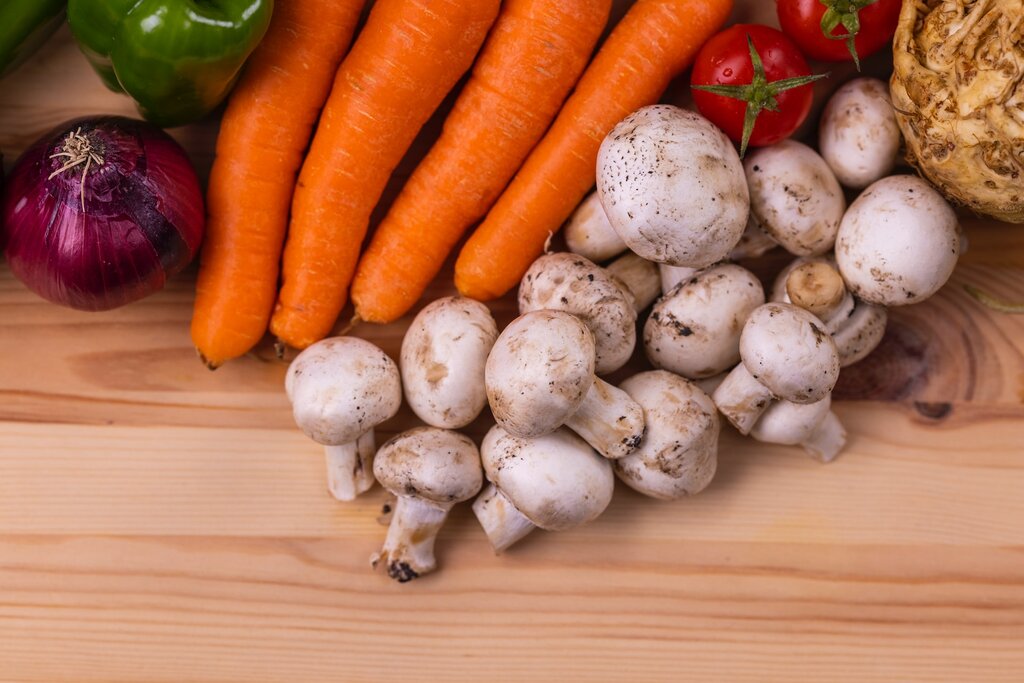Vitamin A Nutrition: Eye and Skin Benefits

Despite being vital for human health, vitamin A deficiency is common. This can lead to several problems, including vision difficulties and dry skin. Vitamin A can be found in a wide variety of foods, but not all of them are made equal.
This blog post will explore the top vitamin A foods that offer the most benefits for the eyes and skin. We'll also discuss how much vitamin A you need and how to get more in your diet.
What is Vitamin A?
Vitamin A is a nutrient that helps keep the eyes healthy. It also helps the skin stay smooth and supple. Vitamin A can be found in many foods, including beef, chicken, eggs, milk, and cheese.
The Different Types of Vitamin A
A vital ingredient called vitamin A can be found in various foods. Vitamin A is well known for its health advantages for the eyes and skin, but it is also essential for the immune system and reproductive health. Retinol and carotenoids are the two primary forms of vitamin A.
The active form of vitamin A is retinol, which can be found in animal foods, including milk, eggs, and liver. Carotenoids are inactive vitamins that can be found in plant-based meals like grains, fruits, and vegetables.
While both forms of vitamin A are essential for overall health, retinol is more effective in supporting eye health, while carotenoids are more effective in helping skin health.
Pros and Cons of Vitamin A
The body needs vitamin A, which is present in several foods. It is necessary for vision, bones, and skin health. Vitamin A can be found in two forms: preformed vitamin A (retinol) and provitamin A (carotenoids).
With vitamin A, there are a few benefits and drawbacks to think about.
What Foods to Eat for Vitamin A?
Good eyesight, a robust immune system, and healthy skin depend on vitamin A. The best way to get enough vitamin A is by eating a variety of foods rich in this nutrient.
Sweet potatoes, carrots, dark leafy greens, squash, cantaloupe, and apricots are some of the top food sources of vitamin A. Other good sources include milk, eggs, liver, and fortified cereals.
When choosing foods with vitamin A, selecting those with calories and fat is essential. This will help you avoid weight gain and other health problems that can come with consuming too many calories.
Recipes with Vitamin A
Regarding healthy eating, incorporating foods with Vitamin A is a great way to ensure your body gets the nutrients it needs. This vitamin is essential for maintaining good vision and skin health and boosting the immune system. Best of all, plenty of delicious recipes feature foods high in Vitamin A.
Here are some of our favorites:
- Roasted sweet potatoes: Sweet potatoes are a great source of Vitamin A, and roasting them brings out their natural sweetness. Try pairing roasted sweet potatoes with grilled chicken or fish for a complete meal.
- Stir-fry with kale and red peppers: This quick and easy stir-fry is packed with flavor and nutrients. Kale is an excellent source of Vitamin A, and when paired with red peppers and a variety of other vegetables, it makes for a delicious and healthy dish.
- Butternut squash soup: Butternut squash is another excellent food source for Vitamin A. This creamy soup makes for a comforting winter meal and can be garnished with shredded cheese or croutons for extra flavor.
So, next time you want to add more vitamins to your diet, remember foods high in Vitamin A. These recipes are not only nutritious but also delicious!
Alternatives to Vitamin A Foods
Vitamin A is an essential nutrient that our bodies need for proper function. However, many people need more vitamin A in their diet. Vitamin A deficiency can lead to problems such as night blindness and dry eyes.
Many foods are rich in vitamin A, such as liver, carrots, sweet potatoes, and spinach. However, these foods may only be suitable for some. For example, some people may not like the taste of liver or may be vegetarian or vegan.
Many alternative sources of vitamin A can be just as effective as foods rich in vitamin A. Some good sources of alternative vitamin A include:
- cod liver oil
- pumpkin seeds
- red peppers
- apricots
- eggs
A practical alternate source of vitamin A is cod liver oil. It is abundant in elements that are good for your health, including omega-3 fatty acids.
A decent alternate source of vitamin A is pumpkin seeds. They are high in antioxidants and minerals such as zinc and iron.
Red peppers are another excellent source of alternative vitamin A. They are also high in antioxidants and vitamins C and E.
Apricots are a delicious source of alternative vitamin A. They are high in fiber and potassium and low in calories.
Eggs are another excellent source of alternative vitamin A. They include every vital amino acid that our bodies require to function correctly.
Conclusion
The body needs vitamin A, which is present in several foods. Increasing the amount of vitamin A-rich foods in your diet is an excellent place to start if you want to improve your vision or skin health.
And as a bonus, many of these foods are delicious and can be easily incorporated into any meal plan. So what are you waiting for? Start adding more vitamin A foods to your diet today!
